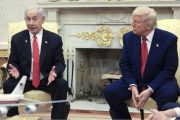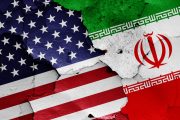
As the Obama administration brazenly waives federal arms-control rules to supply jihadist Syrian rebels in the establishment-backed war against the Assad regime, Libya remains in turmoil after it was handed over to Islamists and self-styled al-Qaeda leaders by NATO forces, especially those of the U.S. government. Indeed, a U.S. ambassador and other Americans are dead, sensitive American military equipment was recently stolen, multiple tribal conflicts are raging, arms from the war are boosting Islamists across the region, oil production has all but come to a halt, and chaos still reigns alongside sharia law in Libya under the Muslim Brotherhood-dominated central government.
Now, it appears to analysts as though the disaster afflicting Libya — brought about in large part by the Obama administration and its allies in Europe and among Islamic autocracies — may be on the verge of being replicated in Syria. Of course, the countries and the wars are different in some respects, but the parallels between what is going on in Syria and what happened in Libya are undeniable. And those links are raising alarm bells — especially considering the sizeable Syrian Christian population and the current state of affairs in Libya, which continues to deteriorate.
In Libya, as The New American documented extensively, the Obama administration decided to openly side with leaders of al-Qaeda and other jihadist groups — many of which boasted publicly during the conflict that they had recently been fighting against American troops in Iraq and Afghanistan. Dictator Moammar Gadhafi, who served as a key U.S. government ally in its terror war until falling out of favor, was eventually brutalized and summarily executed after his regime was pounded into the ground by Obama-backed jihadist rebels and overwhelming American air power.
The U.S. military has not yet openly intervened in the Syrian conflict other than sending weapons and supplies to rebel forces, though the war drums are still beating and Obama is threatening to start attacking regardless of what Congress decides. Meanwhile, as in Libya, rebel forces — virtually all of them waging some sort of “holy war” either under the Muslim Brotherhood and the Free Syrian Army it dominates, or al-Qaeda and its various affiliates in the region — have been receiving massive support from the Obama administration from the start.
Indeed, even before open conflict broke out, State Department cables released by WikiLeaks showed that the Syrian opposition was already receiving U.S. tax dollars to bring about “regime change” going back to at least 2005. More recently, American weapons, supplies, and training have been flowing to assorted rebel factions, too. U.S. forces and military assets are positioned all around Syria’s borders. And like Gadhafi, Assad was also working with the U.S. government in the terror war before being targeted for “regime change.”
“Absolutely there are parallels,” explained John Rosenthal, a Europe-based journalist and author of The Jihadist Plot: The Untold Story of Al-Qaeda and the Libyan Rebellion. In his book, Rosenthal documents in great detail how, in the Libyan conflict, the Obama administration literally switched sides in the “war on terror,” joining with self-styled al-Qaeda leaders against a former terror-war ally who was hard at work battling the very same Islamic extremists that the U.S. government had supposedly been pursuing for a decade.
Rosenthal told The New American that the Obama administration’s Syria policy “is a continuation of its Libya policy”: siding with Islamists against secular regimes that helped the U.S. government in the terror war. The international conditions, however, are different this time, he added, primarily because the Russian government has refused to cooperate with pro-regime change forces in the United Nations Security Council under the so-called responsibility to protect doctrine.
Assad may not have been as helpful to U.S. authorities in the terror war as Gadhafi, whose “apostate” regime had also become a primary target of Islamic extremists; however, The New American’s Michael Tennant showed last year that the brutal Syrian despot was indeed a U.S. ally — helping torture and extract information from terror suspects handed over by American officials, for example. “There’s a different leader in Syria now,” then-Secretary of State Hillary Clinton said in early 2011. “Many of the members of Congress of both parties who have gone to Syria in recent months have said they believe he’s a reformer.” Indeed, Syria was one of the “most common” destinations for rendered U.S. terror-war suspects, according to multiple reports.
“During the time of the U.S. presence in Iraq, the Syrians were often accused of not doing enough to stem the flow of al-Qaeda-affiliated fighters into the country,” Rosenthal continued. “But the very nature of the criticism shows that vis-à-vis al-Qaeda, the U.S. and Syria were at the time fundamentally on the same side. In the meanwhile, this is not the case, because we changed sides.”
As far as the Syrian rebels, countless sources — even including the establishment media during the latest conflict — have documented their jihadist credentials. The Obama administration officially designated the Jabhat al-Nusra a terrorist organization — an al-Qaeda-linked group that analysts say is among the most effective fighting forces in Syria. For Rosenthal, however, the designation “represents a sort of sleight of hand in this regard,” he explained.
“When the listing was made public, many of the other Syrian rebel brigades responded by vociferously protesting under the motto ‘we are all Jabhat al-Nusra’,” said Rosenthal, who documented the Libyan rebels’ deep connections to global jihad, using official sources, court records, police reports, and European news reports. “And they are right. It is simply not possible to support the rebellion and not be providing de facto support for Jabhat al-Nusra, which is not only an integral part of the rebellion, but arguably its vanguard.”
Meanwhile, Secretary of State John Kerry continued to claim that less than one-fourth of rebel forces are “extremists,” an estimate widely dismissed by experts and even U.S. officials. Rosenthal called it “ridiculously low.” Instead, “100 percent would be closer to the truth,” he explained, citing the names of rebel brigades and publicly available evidence. “One need only look at the videos posted by the rebel formations themselves, which regularly show them displaying the black flags of jihad and brutally executing detainees — both soldiers and civilians — in the style made famous by Abu Musab al-Zarqawi and al-Qaeda in Iraq.”
Indeed, as The New American reported yesterday, the supposed “estimates” by the administration claiming such a low percentage of “extremists” are calculated by assuming that rebels not fighting directly for al-Qaeda are “moderates.” The Free Syrian Army, though considered the primary “moderate” fighting force worthy of U.S. taxpayer support, is actually dominated by the Muslim Brotherhood and other hardcore Islamists. The pro-rebel Al Jazeera even reported that the FSA has been selling foreign-provided weapons to al-Qaeda leaders in Syria.
“Talk of ‘moderate’ rebels on the part of people like John Kerry or Elizabeth O’Bagy is merely a matter of moving the goalposts,” Rosenthal explained, echoing widely expressed sentiments among analysts following the conflict. “In the sense of the term that was usual, say, just a year or two ago, they are virtually all Islamic extremists. For the great bulk of the rebels, the war undoubtedly does represent a holy war against an ‘apostate’ Arab leader, as was the case in Libya.”
According to Rosenthal and his research on global Islamic extremism, Hosni Mubarak, Gadhafi, and the Assad dynasty have long been identified in al-Qaeda literature as “tawaghit.” The term is often translated as “tyrants,” he explained, but it actually means “false idols,” with the implication being that the rule of the relevant despots “usurps the legislative role that, per Islamists, is reserved for Allah (whose laws are, of course, embodied in the Quran).”
“Even more chillingly, for a large part of the rebels the war appears also to represent a holy war against what they perceive as entire heretical communities: the Alawis and the Shia,” Rosenthal continued. “Both the rhetoric and the practice of the rebels vis-à-vis Alawis and Shia is often downright genocidal.” Indeed, as The New American has reported, a spokesman for the “moderate” FSA announced a plan to ethnically cleanse Shia Muslims in a TV interview, and entire minority-dominated communities have already been massacred by jihadist rebels.
But what about Libya today? Has it achieved “democracy” and “human rights,” as proponents of “regime change” argued it would? Rosenthal’s book offers extensive documentation about what really happened during and after the UN-backed “regime change” operation led by the Obama administration. The New American also did a major report about the entire fiasco, explaining, among other elements, how the U.S. government sided with al-Qaeda and its affiliates to bring down the regime, and what that meant for the future of Libya.
More recently, the U.K. Independent published a special report this month looking at the shattered nation today. “Libya has almost entirely stopped producing oil as the government loses control of much of the country to militia fighters,” noted the report, adding that the nation went from 1.4 million barrels a day earlier this year to just 160,000 barrels a day now. “As world attention focused on the coup in Egypt and the poison gas attack in Syria over the past two months, Libya has plunged unnoticed into its worst political and economic crisis since the defeat of Gaddafi two years ago.”
According to Independent reporter Patrick Cockburn, the Muslim Brotherhood-dominated central government is witnessing a disintegration of its authority “in all parts of the country.” That reality on the ground, he continued, casts doubts on claims by American, British, and French politicians that NATO’s 2011 “military action” in Libya was a “successful foreign military intervention which should be repeated in Syria.”
“Libyans are increasingly at the mercy of militias which act outside the law. Popular protests against militiamen have been met with gunfire,” the Independent reported, citing dozens of deaths at a recent protest. “Foreigners have mostly fled Benghazi since the American ambassador, Chris Stevens, was murdered in the US consulate by jihadi militiamen last September. Violence has worsened since then with Libya’s military prosecutor Colonel Yussef Ali al-Asseifar, in charge of investigating assassinations of politicians, soldiers and journalists, himself assassinated by a bomb in his car on 29 August. Rule by local militias is also spreading anarchy around the capital.” Meanwhile, Libya’s new rulers announced an “integration” plan with Sudan’s genocidal Islamist dictator, too.
Instead of helping to create yet another bloody disaster in the Middle East, Congress should step in and restrain Obama, ensuring that the U.S. government remains neutral in the ongoing war between Syria’s ruthless dictator and the largely jihadist “rebels.” Christians are already under mortal threat there after having been protected by the Assad-family regime for decades, and if the Obama-backed “rebels” succeed, as in Libya, Christians’ futures will become even more imperiled. There are no good outcomes in Syria at this point, but having American taxpayers turn that nation into yet another Libya — or worse — is a terrible plan for more than a few reasons.
Alex Newman, a foreign correspondent for The New American, is normally based in Europe. He can be reached at [email protected].
Related articles:
Libya Rulers Vow “Integration” with Sudan Terror Regime
Christian Massacres: A Result of U.S. Foreign Policy
President Breaks Arms Export Laws to Send Shipments to Syrian “Rebels”
Syrian Rebel Alliance Openly Threatens Ethnic Cleansing
Syria: From Valued Ally to “Vicious Enemy”
What is the Obama-backed Free Syrian Army?
As Syria War Plan Loses Steam, Bid to Empower UN Court Grows




